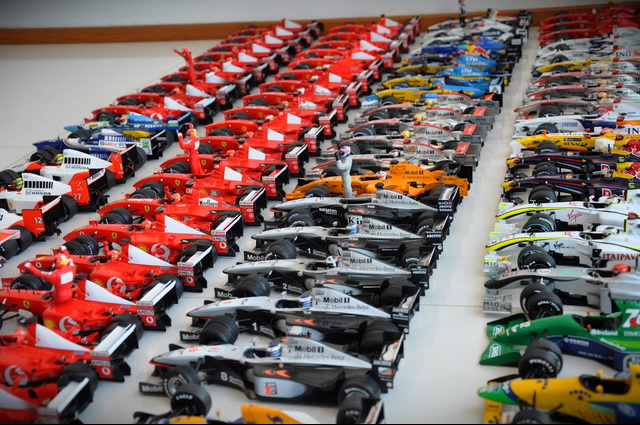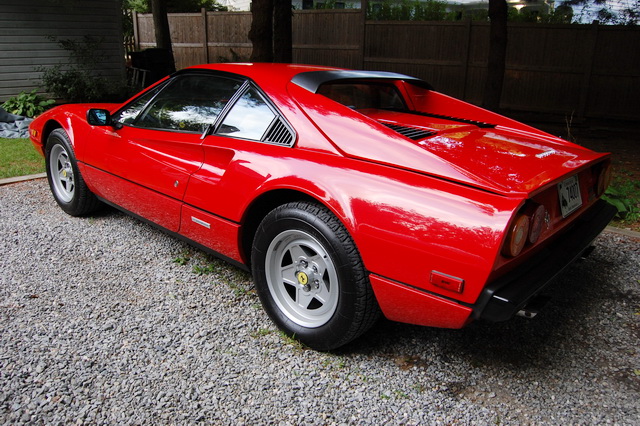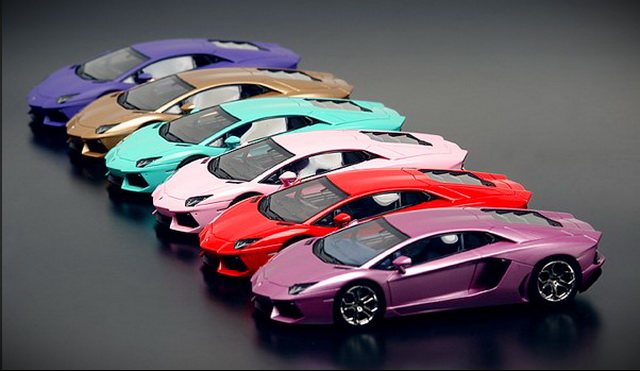A Time to Remember
九年了…
哥哥 你還好嗎﹖
就快到9月12號了,今天又無意間聽到了這首最喜歡的Perfidia!
要記得的、永遠都會記得!
Interesting Stories about Mclaren and UT’s GTR F1 LM
The following is written by Stig3 of Singapore diecasters (SGDC), I found they are very informative and useful, especially some inside stories about UT’s Mclaren GTR F1 LM.

Haha.. This is a very tough question dude.. Everyone has different opinions and information. Even myself, I gathered information based on what I read e.t.c..
This is gonna be very confusing but read slowly and you just might understand ![]() I took an hour to type this out…
I took an hour to type this out… ![]() I might copy this into my Mclaren Info thread..
I might copy this into my Mclaren Info thread..
Some common misconceptions:
Mclaren first made XP1 (different from XP1 LM) to XP5. Based on these the main road car Mclaren F1s were built. These XP1-5 are the ones with side view mirrors mounted on the upper part of the door.
Then they tuned these and made the GTRs for racing.
The F1 GTR was never made for the roads, it was purely for racing in Le Mans and other racing series. However after the races were over, they were eventually modified and made street legal. So those who own F1 GTRs will be laughing at those who own just F1s ![]() As they are more rare and “powerful”.
As they are more rare and “powerful”.
There is no such car as the Mclaren F1 GTR LM or Mclaren F1 GTR XP1 LM but there is Mclaren F1 LM and the Mclaren F1 XP1 LM. 5 F1 LMs were made to honor the GTRs which placed 1st, 3rd, 4th, 5th and 13th in 1995 Le Mans race (Can u believe thaT?!). Oh and all my labeling wrong too. I used to call GTR XP1 LM all along but there is no such thing ![]()
The tag LM in the name does not mean it was raced in Le Mans. First they made XP1 LM and then the 5 LMs which were meant for road use. Ironic & confusing eh? ![]()
Then later on came the final variant which are the GTs, in 1997. These models are hard to find. You can recognise them becoz they are essentially longtails without any spoilers:
Anyway about the UT Models part. The best thing is UT Models more or less named everything wrong!! All their models have the label XP1 LM on them, but behind on the box its stated “Mclaren F1 GTR Le Mans Roadcar”. That label means it was the GTR car which had raced in LeMans but now has been made street legal. XP1 LM is clearly not that! There was only 1 XP1 LM ever. Another wrong move is XP1 LM was made to be a street car, but the UT models do not have the 2 passenger seats. Instead they have the fire extinguisher and roll cage like GTR cars. ![]() That XP1 LM label on the side and the F1 LM label on the front windscreen are just wrong!
That XP1 LM label on the side and the F1 LM label on the front windscreen are just wrong!
As for split wing and antenna, I am not too sure as well ![]()
The very first ones should be the blue edition boxes with XP1 LM having split wings. Among these they had some with the antenna. Which doesn’t make sense as XP1 LM for sure did not have antenna. Again another wrong detail.
Then the GTR came into picture. Single wing, normal UT boxes, no antenna.
I have no idea how the antenna got there on the XP1 LM ![]() By right, the GTR is supposed to have antenna for racing reasons (radio contact). You can also see that on all the other F1 GTRs.
By right, the GTR is supposed to have antenna for racing reasons (radio contact). You can also see that on all the other F1 GTRs.
The most rare is the split wing with antenna.
So far I have seen one. Mine. ![]() Did anyone of you have another one? Or seen being sold on Ebay before? I am very curious as I see all the papayas but never saw one with antenna except this.
Did anyone of you have another one? Or seen being sold on Ebay before? I am very curious as I see all the papayas but never saw one with antenna except this.
Do forgive me for doing so, but I see there are a few inaccuracies in this post that I feel the need to correct for the benefit of all.
None of the XP McLaren F1 Prototypes are fitted with high mirrors. The first F1 to have them was the non-running F1 Clinic Model that was used to launch the F1 at the Monaco Sporting Club in 1992, and also to establish the production tooling required to manufacture the body panels. The F1’s designer and Technical Director Gordon Murray originally wanted the mirrors to be placed in the high A-pillar positions because that’s where they worked best. However, automotive laws and legislation at that time prevented this, and therefore the production F1 Road Cars had to have the mirrors mounted in the conventional wing positions.
F1 Clinic Model
XP1 was the first F1 prototype made, and at the end of its’ life-span it was being used by the BMW Motorsport engineers to conduct hot-weather testing in Namibia, Africa. However the test driver lost control when the wheels on one side hit a gravel-filled ditch, and subsequently it rolled a couple of times. The car was a total write-off, but the driver escaped unharmed apart from a few cuts and bruises, and this proved the durability and crash-worthiness of the carbon fiber passenger cabin safety cell. A little while later, leaking oil from the engine was ignited by the hot exhaust catalyzers, and this sparked off a fire that consumed the entire car. By the time the McLaren Cars support team arrived, there was almost nothing left. It was never fitted with high mirrors.
XP1
XP2 was the second prototype F1 produced, and it was the car used by McLaren for crash testing in the UK as required by legislation for all production road cars. It too was never fitted with high mirrors.
XP2 is on the left, and XP3 is on the right
XP3 is the third prototype F1, painted Silver and initially used by McLaren for performance and durability testing and finalization of the suspension and braking systems. This culminated in a few days’ worth of high-speed hot-weather testing at the Nardo high speed track in Italy. Although they weren’t planning to attempt a maximum top speed test run just yet, after the test sessions were complete, Project 1’s chief test and development driver Jonathan Palmer decided to take XP3 out for one last run and see just what she could do. He eventually managed to hit a telemetry-verified speed of 231Mph. Therefore XP3 became the first F1 Road Car to establish the McLaren F1 as the Fastest Production Road Car in the world, beating out the Jaguar XJ220’s previous best of 220Mph. And this was done when XP3 was still fitted with an early-spec BMW S70/2 V12 engine producing only 580Bhp, instead of the full 627Bhp of the final production-spec cars. It is then perhaps no surprise that XP5 would go on to do what it did with the full 627Bhp. When Gordon Murray first started work with McLaren Cars Limited, he included a clause in his contract which stipulated that McLaren would award him one F1 Road Car at the end of production as part of his reward package. XP3 is completely standard apart from the fitment of the suspension from the F1 LM. It is still owned and exercised regularly by Gordon until this very day. Again, it doesn’t have high mirrors, neither did it ever have them.
XP3
XP4 was the fourth F1 prototype made, and it was used mainly for testing and development of the gearbox and suspension systems. When McLaren was finished with it, it was initially sold to a New Zealand collector by the name of Sir Roger Bhatnagar, who owned it for a couple of years, but ended up hardly ever driving it. Therefore, he sold it on to an ex-NASA American guy named Larry Blair, who still retains ownership of XP4 in San Jose, California until today. No high mirrors on this F1 either.
XP4
Finally, XP5 is of course the last F1 prototype made, in Dark British Racing Green. It’s also probably one of the most popular and most-seen F1s of all, for a very good reason. It is XP5 that gave the McLaren F1 the final title of the World’s Fastest Production Car in 1995, when it hit 386.7Km/h or 240.1Mph at the VW Ehra-Lessien Test Facility in Germany, after XP3 first wrestled the record into McLaren’s hands when Jonathan Palmer drove it to 231Mph during high-speed hot-weather testing in Nardo, Italy.. Apart from raising the engine rev-limiter, removing the front single wiper, and taping over the front indicators and other gaps in the frontal bodywork, it was an otherwise completely standard F1 Road Car at that time. After the top speed record was achieved, McLaren retained ownership of the car and displayed it alongside XP1LM, GTR #01R, GTR Longtail #024R, and 56XPGT in the McLaren Technology Center. However, there are some who say that XP5 has now been sold on to an unknown party, as it has not been seen at the MTC for quite some time. Once more, XP5 never had high mirrors.
XP5
The very first production-spec F1 Road Car to be fitted with the High Mirrors Option (as it is known) was #040, currently owned by a guy named Flemke who lives in the UK and Germany. Its’ first owner before Flemke was a German guy whose initials are HS, apparently. HS was the first known F1 owner to have looked at the high mirrors on the Clinic Model and then told McLaren that he wanted them on #040.
It wasn’t a case of simply bolting on the mirrors in that position. The story goes that McLaren had to make new stronger carbon fiber doors and reinforce the whole door structure and door aperture surround, in order to endure the added structural strain that would be caused by the additional aerodynamic drag of the high mirrors. This whole process reputedly cost HS the far side of 300,000 Pounds Sterling at that time. #040 still retains its’ High Mirrors until today, as Flemke says they’re much easier to read in the high position than in the standard wing position.
#040
After the High Mirrors effect was seen on #040, 2 other F1 owners told McLaren that they wanted it done for their cars as well. One of them is Ralph Lauren, who owns F1 LM chassis # LM3 as well as 2 F1 Road Cars, #055 and #074. Both of his F1 Road Cars are silver. #055 was refitted with high mirrors at some point in its’ life, while #074 was built at a later date and had the High Mirrors Option fitted while it was in build.
#055
#074
The other customer F1 Road Car that has the high mirrors is #071, currently located in Germany. It is also the only F1 Road Car in the world that wears the McLaren Historic Papaya Orange paint. Little else is known about this F1, its’ owner, or when it had the high mirrors fitted.
#071
Last but certainly not least, F1 Road Car #050 also has the high mirrors, and it is owned by current McLaren Automotive and McLaren Group CEO Ron Dennis, who was also one of the original driving people behind the F1 road car project, internally known as Project 1. The story goes that the first F1 made for Ron was painted an unusual metallic shade of dark brown. He didn’t think it was a great color, so so it was sold on and #050 was built for him instead. It was likely fitted with the high mirrors while in build, and to quote Ron Dennis, “I thought it was a more elegant solution. I wanted the car as it was originally conceived.”
#050
I hope this will be informative and beneficial for all who read it. Thanks.
Also thanks to my friend Peloton25 for hosting these pics, and for all the knowledge about the McLaren F1 he has imparted upon me.
英國同學週年聚會
上週五是英國Chichester中學同學20週年聚會,當晚感慨萬千,能有一班好朋友相伴人生、已無憾!
想當年青澀的我,對人生充滿了夢想、對前路充滿了憧憬、對愛情充滿了期待、對一切都是那麼的好奇。
努力下夢想一一實現,雖然大家多年不見,但純潔的友情依然沒變,相信接下來的日子里大家會更加珍惜彼此間的友誼,共勉之!
Exoto和Minichamps Ferrari 312T的直接比較
紅色那台12號 312T Niki Lauda是Minichamps出的,Exoto則是銀色的,細節方面Exoto至少要強2-3倍,油漆也好得多,難怪價錢也比Minichamps高出幾倍了。


另一個瘋狂的現代法拉利F1新加坡收藏家
OMG!

偶遇經典法拉利
今天下午6點在會所打完網球後,在樓下的大閘口看到了一台令我為之一振的80年代法拉利經典跑車。
低吼的V8引擎聲音剎是好聽,想不到308GTB的真車竟然是這麼的纖瘦苗條,那股正宗的意大利騷味此刻也完整地在我面前釋放了出來,熏得我差點沒站穩。
我再也把持不住了,忍不住在308GTB旁邊不停地打圈欣賞,開車的那位竟然主動問我是不是車主來拿車,此車的引擎問題已經修復好了,當時我是多麼的希望我就是這台女神的駕駛員,哈哈。。。
閑聊之下才知道他是汽車維修公司派來來送貨的,也就是同一台大紅色308GTB我去年曾經就在附近見過,原來真的是此區鄰居的珍藏,太好了,那麼以後我一定會有更多的機會看到它。
憑良心說,我自己就認為這台30多年高齡的超跑就比鄰居最新的那台火紅色F458來得好看,也只有這樣正統法拉利血統Pinifarina的設計加上那好聽的V8才能特顯出這台308GTB苗紅根正的本性。
忘記說很多國外的法拉利中年收藏家就是當年讀書的時候在電視劇Oricalc Crisis Division裡面看到了令他們永遠不能忘記的第一台法拉利308GTB。這也正正解釋了為什么1比18 Hotweels Elite的Ferrari 308 GTS Red (Oricalc Crisis Division – Magnum PI)現在可以賣得天價這麼貴,全因為是一份不能忘懷的情意結。

棗紅色的奔馳300SEL (W140)
在鄰居上次那台經典棗紅色的奔馳300SE (W126)旁邊,今天突然發現了它的后代。
原來同樣是台好看的棗紅色奔馳300SEL (W140),但是我還是覺得父輩設計比較出色些,尤其是當年那高貴華麗的W126 560SEC!
記得在加拿大讀大學的時候,香港朋友家們前竟然停泊了兩台黑色的W126,一台560SEL,另一台560SEC,當時的震撼場面現在還記憶猶新。
Minichamps真的會出嗎1/18 Mclaren MP4-12C?
在最新迷你切2012年的目錄上赫赫顯示著這台很多人都喜歡的MP4-12C,我上星期還真在香港路上看見一台白色1:1的,其實感覺很像法拉利F458。
希望是1比18的,不過也很大機會是台1比12的,因為Autoart應該是拿了1比18 MP4-12C的版權,而且在AA即將推出的名單里有這台。

即將推出的1/43 Make Up Lamborghini LP700-4全色
明明是意大利的東西,為什麼日本人可以把所有的東西都可以弄到這麼東洋風﹖哈哈。。。

